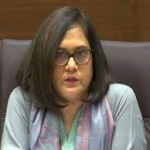
In a tragic and mysterious incident, a young Indian couple, Pratap Yadav, 24, and his wife Pushpa Yadav, 22, were discovered dead in their home just one day after their wedding ceremony. The shocking part of this unfortunate incident was that both individuals suffered heart attacks at the same time, despite having no prior history of cardiac issues.
The couple’s lifeless bodies were found in a sealed room at their residence in Godhiya village, part of the Kasierganj police station in Bahraich. Local authorities initially suspected suffocation due to the room’s lack of ventilation as a possible cause of the heart attacks. The police are now awaiting the results of the post-mortem examination, and the viscera of both individuals have been preserved for further investigation at the State Forensic Science Laboratory in Lucknow.
While there were no signs of forced entry or any visible injuries on the couple’s bodies, the simultaneous heart attacks have raised concerns and questions about the true cause of their tragic demise. Investigators are meticulously compiling a timeline of the couple’s activities and listing their food intake on the day preceding their deaths. Furthermore, a team of forensic experts is thoroughly examining the room and surrounding circumstances to shed light on the cause behind this heartbreaking incident.
This unsettling incident brings attention to the alarming rise of cardiovascular disease (CVD) among young Indians. Recent epidemiological data reveals that CVD has become the leading cause of mortality in India, surpassing cancer, according to the World Health Organisation (WHO). Dr. C N Manjunath, a renowned cardiologist, highlighted this concerning trend while addressing the ‘HAL Medicon 2022,’ stating that heart issues are increasingly affecting the young and middle-aged population.
This concerning revelation is further supported by a comprehensive study published in the National Centre for Biotechnology Information, titled ‘Cardiovascular disease in India: A 360-degree overview.’ The study predicts that Indians will experience the impact of CVD a decade earlier than their Western counterparts, emphasizing the urgent need for preventive measures and early detection.
With CVD projected to account for nearly one-fourth of all deaths in India by 2030, the country faces the grim possibility of having the highest cardiac mortality rate worldwide. This harrowing scenario calls for increased awareness, proactive health screenings, and the adoption of heart-healthy lifestyles among the Indian population.
As investigations into the untimely deaths of Pratap Yadav and Pushpa Yadav continue, their tragic story serves as a stark reminder of the pressing need to address India’s growing cardiovascular health crisis. The loss of two young lives to simultaneous heart attacks highlights the importance of prioritizing cardiac health and taking preventive measures to ensure a healthier future for all.





